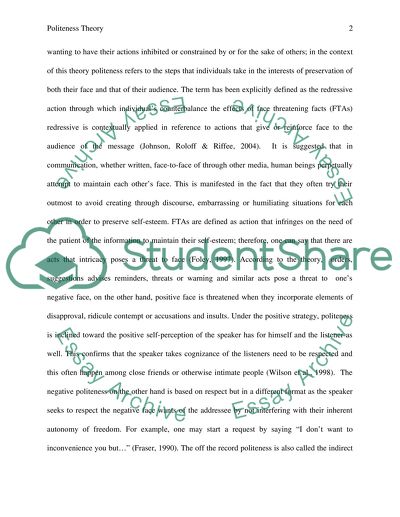Cite this document
(“Politeness Theory Essay Example | Topics and Well Written Essays - 2500 words”, n.d.)
Retrieved from https://studentshare.org/education/1497207-politeness-theory
Retrieved from https://studentshare.org/education/1497207-politeness-theory
(Politeness Theory Essay Example | Topics and Well Written Essays - 2500 Words)
https://studentshare.org/education/1497207-politeness-theory.
https://studentshare.org/education/1497207-politeness-theory.
“Politeness Theory Essay Example | Topics and Well Written Essays - 2500 Words”, n.d. https://studentshare.org/education/1497207-politeness-theory.


